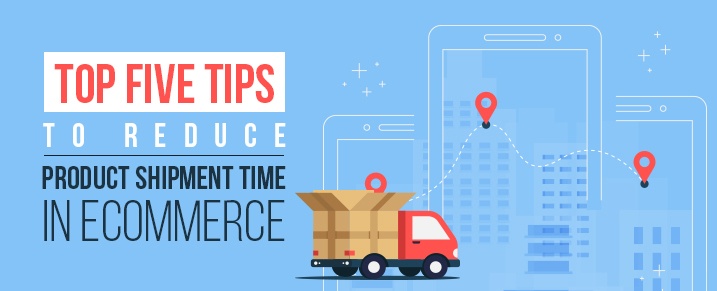
Customer satisfaction depends a lot on how quickly you ship the products customers buy. Naturally, you would like to steal a march ahead of your competitors by shipping products within or before the committed time. However, shipment time reduction is not a simple or straightforward task as you have several dependencies on carrier efficiency, warehouse location and internal processes and efficiency, just to name a few of them. Depending on how much you want to reduce shipping time, you may need to pay a long and hard look at your entire supply chain. While you may not need to shake up the supply chain totally, you need to work on weak links.
Here are the top five tips to reduce product shipment time in eCommerce.
Have local warehouses
Assuming that you ship products across the country, it is important to have warehouses at multiple locations in the country. To have warehouses at almost every location across the country, you will surely need to strain your finances. That is unnecessary especially if you are a small or mid-sized eCommerce retailer. Instead, identify warehouses at strategic locations which can cater to multiple locations up to a certain distance.
Avoid committing to a too ambitious delivery timeline to the customer
You do not want to commit to an unrealistic or unsustainable delivery timeline and incur customer wrath. However, you need to maintain a fine balance here — you may set an over-aggressive timeline and be unable to sustain it or have a too-relaxed timeline and see customers abandoning shopping carts. In the latter case, your loss can be your competitors’ gain. You do not want to deliver after your competitors do. Your delivery time will depend on your supply chain efficiency and you should constantly strive to improve efficiency. Depending on your supply chain efficiency level, set a delivery timeline on the online storefront so that it is visible to the customer.
Manage stocks well
Your back office and eCommerce system should always reflect the current status of the stocks. So, naturally, your eCommerce and back office system should be in sync. It would be a disaster if, for example, a product is out of stock but the eCommerce system shows the product in-stock and accepts payment from the customer.
Manage carrier relationships well
Carriers play an extremely important role in achieving timely product shipment. So, before hiring the services of a carrier, carefully evaluate its record. You have your own shipment requirements and timelines and you should categorically state your requirements in the agreement with the carrier. The carrier needs to first accept your requirements. Note that to allow your carrier deliver in time, you should provide it with supporting systems such as quick payment clearance, customer details, and stock clearance.
Use intelligent analytic’s to predict product demand
Some areas or regions tend to have demands for certain product categories. For example, regions which, during a time in the year, are extremely hot and humid may need copious air conditioners or coolers. You need analytic’s or numbers to predict demand for certain products in certain regions. Accordingly, you can preemptively have sufficient stocks at warehouses in those regions so that you do not miss out on fulfilling a customer request.
Also Read:
Top 5 tips to reduce your shipping cost
5 things which you should include in your Shipping Box
How to choose a shipping strategy for your eCommerce Business












